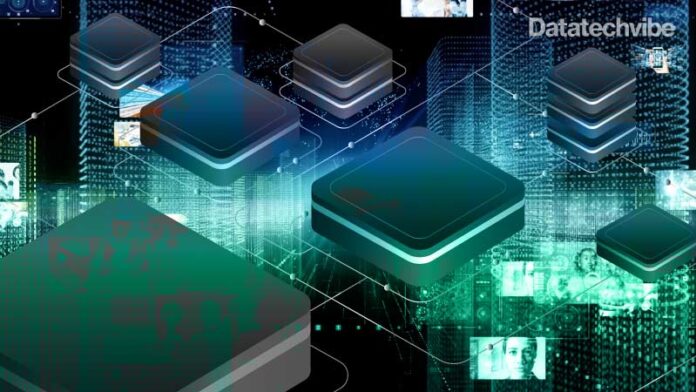It is a lesser-known fact that Data Distribution Service (DDS) has been in use for nearly ten years, and its acceptance is continuously rising.
The DDS standard is a middleware technology that powers many machines and mechanisms, including trains, autonomous cars, airports, spaceships, luggage handling systems, industrial robots, military tanks, and frigates.
DDS is a publish-subscribe-based middleware programme that has been standardised. It aids in the construction of middleware layers for machine-to-machine communication. This software is essential, particularly for embedded devices or applications that need to operate in real-time. It is used in all critical applications to provide a reliable communication layer between sensors, controllers, and actuators and is maintained by the Object Management Group (OMG).
Since it sits at the start of the software supply chain, making it simple to lose track of, DDS is a prime target for attackers. Sixty-six per cent of attacks between 2020 and 2021 targeted supplier codes.
DDS is used by organisations such as NASA at the Kennedy Space Centre and Siemens in wind farms, Volkswagen and Bosch for an automated valet parking system, and Nav Canada and European CoFlight for air traffic control.
It is the cornerstone of industry standards like Adaptive AUTOSAR and OpenFMB for smart-grid applications. Additionally, it is the default middleware in the Robot Operating System 2 (ROS 2), the de facto industry-standard operating system for robotics and automation.
Applications and impacted sectors
Industry-grade middleware layers intended for mission-critical applications are implemented using DDS. For instance, DDS is used to transmit commands from the electronic control unit (ECU) down to the steering servomotors when an autonomous vehicle’s AI wants to send a “turn left” order. The same happens when speed sensors transmit data from the motor to the ECU.
Another instance is when a runway has to be lit up by an airport operator within the air traffic control tower. These particular signals are sent by software at contemporary airports, and DDS ensures that the orders are delivered on time.
Telecommunications and networks
DDS is used in this industry to operate and improve communication between network devices like optical transponders, which are essential building blocks for 5G mobile transport. It is also used to build and distribute the system for customising settings, keeping track of the hardware, and distributing updates. The service is also being evaluated for software-defined networking (SDN) technologies to incorporate next-generation networking control planes.
The defence industry
DDS’ typical usage in the defence sector includes navigation systems, weaponry and management, command and control (C&C) systems, and radar. Some agencies, such as the NASA launch control system, use DDS in their supervisory control and data acquisition (SCADA) systems.
Data centres, virtualisation, and cloud computing
High and low-level software advancements compromise DDS’ utility in data centres and virtualisation. It is the ideal choice due to its built-in or add-on integration capabilities for managing virtual and machine units for effective data interchange and enhancing how virtual machines (VMs) and compute cores communicate. DDS may be utilised across scattered networks to give the impression of a unified DDS-based network by relying on its ability to multicast for discovery. For example, NVIDIA has listed DDS as a tool for system-virtualisation and cloud-computing applications, mainly for exchanging data within and across virtual machines.
Energy
Climate change and its challenges are driving significant innovation and changes in the sector due to emerging Industrial Internet of Things (IIoT) solutions. Available technologies are solving problem areas. Both states and companies are adopting DDS to research and implement applications and programs for power generation, storage and management, and distribution and control.
Healthcare
DDS is used by businesses and healthcare stakeholders to allow interoperable data communication for clinical systems and medical devices. Use cases include healthcare facilities in many nations that have command centre software to handle urgent situations, facilitate the usage of medical equipment for the safety of hospital patients, and integrate clinical decision systems like computers and medical tablets.
The mining industry
While less visible to the public, the mining industry is fertile ground for innovation in information and communication technologies (ICT). For example, OpenDDS is used by Plotlogic for precision mining through geological modelling, which helps reduce waste in the process. For instance, Komatsu uses RTI Connext DDS for mining machinery integration and control, while Atlas Copco uses OpenSplice Vortex to create a common platform for mining system automation.
IIoT and robotics
DDS plays a fundamental role in the robotics sector because it is the default middleware of ROS 2, the rapidly growing, de facto standard OS for consumer, service, and industrial robots, as well as for autonomous systems in general. ROS is to robotics what Ubuntu and Linux are to computing. Particularly, Eclipse Cyclone DDS has been chosen to be the default DDS implementation in ROS 2
Public and private transportation
Public transportation is another use case for DDS. There are 1.1 million railway lines worldwide, transporting 4,150 billion passenger kilometres (pkm). ProRail uses OpenSplice Vortex for distributed railway network management in a system chosen by the Dutch railway network.
There are also more than 10,000 (expected to become 44,000) airports worldwide, each with an average of 2.5 runways (up to 36). An airport runway has thousands of control points, and even if only 1 per cent were using DDS (conservatively), this would make roughly 250,000 DDS nodes (up to approximately 1.1 million). The ATC towers in Spain, the United Kingdom, and Germany use eProsima Fast-DDS, while Coflight Consortium (Thales in France and Selex-SI in Italy) in European Air Traffic Management (EATM) uses OpenSplice Vortex for flight data processing. Nav Canada uses RTI Connext DDS for the same purposes.
Wrapping up
While typically found in all modern hardware and software environments, protections such as address-space layout randomisation (ASLR), executable space protection (ESP), data execution prevention (DEP), no-execute (NX), and write XOR execute are not always applicable to the use cases where DDS runs. One of the examples is a low-power embedded system with minimal resources, such as a field sensor. However, such protections eliminate exploitability, leaving DoS as the only viable tactic for an attacker.
If you liked reading this, you might like our other stories
Company Close-up: Tableau Making Data Speak Louder
Is AI Shifting The Human-In-The-Loop Model In Cybersecurity?









